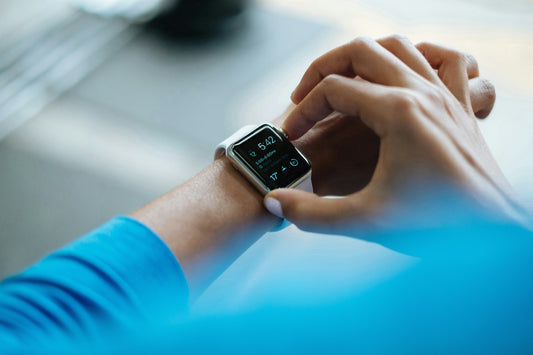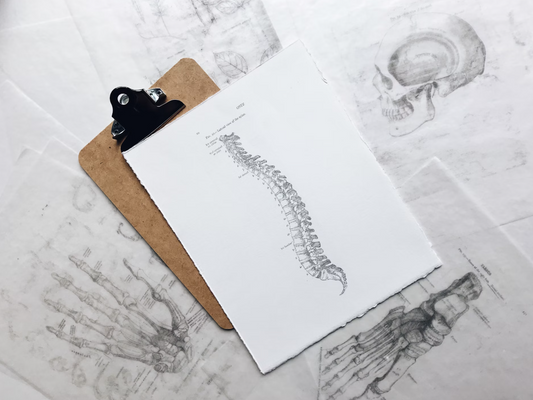Glossary: What is a Nebulizer
A nebulizer is a medical device designed to deliver medication directly to the lungs in the form of a mist or aerosol. This method of drug delivery is especially effective for patients with respiratory conditions such as asthma, chronic obstructive pulmonary disease (COPD), and other ailments that affect breathing. By understanding how nebulizers work and their various applications, patients can better manage their conditions and improve their overall health.
Understanding the Basics of a Nebulizer
Nebulizers are invaluable tools in the world of respiratory medicine. They convert liquid medication into a fine mist that can be inhaled easily. This targeted delivery system allows for faster and more efficient absorption of medication in comparison to oral or other forms of treatment.
Definition and Function of a Nebulizer
A nebulizer functions by using a compressor, ultrasonic wave, or vibrating mesh technology to atomize liquid medication. The resulting fine mist is suitable for inhalation into the lungs. This method is particularly beneficial for those who may struggle with traditional inhalers, such as young children or individuals with limited hand-eye coordination.
Besides their primary role in delivering medication, nebulizers can also help clear mucus from the airways, making it easier for patients to breathe. Some nebulizers also come equipped with a saline solution to help moisten the airways, providing additional relief for patients with dry or irritated lungs. This dual functionality not only aids in medication delivery but also contributes to overall respiratory health, making nebulizers a versatile option for managing various respiratory conditions.
The History and Evolution of Nebulizers
The concept of nebulization dates back to the 19th century, but it was not until the mid-20th century that nebulizers became widely used in modern medicine. Initially, nebulizers were bulky and cumbersome, requiring a power source to operate effectively. These early models often limited patients' mobility and convenience, which posed challenges for consistent treatment adherence.
Today, advancements in technology have led to the development of portable and user-friendly nebulizers. These devices can now run on batteries, making them more accessible for home use and travel. Additionally, modern nebulizers offer a variety of features, such as adjustable medication dosages and integrated timers, enhancing their usability and effectiveness. The introduction of smart nebulizers, which can connect to mobile apps, allows patients to track their usage and medication schedules, further improving adherence to treatment plans. As research continues to evolve, the future of nebulizers holds exciting possibilities, including the potential for personalized medicine tailored to individual patient needs.
Different Types of Nebulizers
Nebulizers can be classified into several types based on their method of medication delivery. Understanding the different types can help patients choose the right device for their needs.
Jet Nebulizers
Jet nebulizers, also known as air nebulizers, use compressed air to convert liquid medication into aerosol. These devices are popular in clinical settings and are widely available for home use. They are effective for delivering a variety of medications, but may be larger and require more time to deliver a full treatment.
One of the key benefits of jet nebulizers is their ability to handle high viscosity medications, making them suitable for patients with more severe respiratory conditions. Furthermore, jet nebulizers often come with a range of accessories, such as masks and mouthpieces, allowing users to customize their experience based on comfort and preference. Regular maintenance is essential to ensure optimal performance, as the nebulizer components can accumulate medication residue over time, potentially affecting the delivery of subsequent treatments.
Ultrasonic Nebulizers
Ultrasonic nebulizers use high-frequency sound waves to create mist from the medication. They are generally quieter than jet nebulizers and are often more compact, making them convenient for home use.
These nebulizers are particularly suitable for certain medications but may not be ideal for viscous solutions. As such, it's important for users to consult with their healthcare provider to determine the best type for their specific needs. Additionally, ultrasonic nebulizers often feature advanced technology, such as automatic shut-off and adjustable mist settings, which can enhance user experience and safety. The portability of these devices makes them a favorite among travelers, as they can easily fit into a carry-on bag without taking up much space.
Mesh Nebulizers
Mesh nebulizers operate by pushing medication through a mesh membrane, creating a fine mist. This type of nebulizer is known for its efficiency and speed, allowing for quicker medication delivery.
Mesh nebulizers are lightweight and portable, making them ideal for patients who are frequently on the go. Additionally, these devices produce a lower noise level, providing a discreet option for medication delivery in public settings. The innovative design of mesh nebulizers often includes features like rechargeable batteries and easy-to-clean components, which can significantly enhance user convenience. Moreover, the fine mist produced can penetrate deeper into the lungs, making mesh nebulizers particularly effective for patients with chronic respiratory issues, as they can deliver medication more effectively to the targeted areas of the respiratory system.
The Role of Nebulizers in Healthcare
Nebulizers play a crucial role in the management of various respiratory diseases. They are essential in delivering life-saving medications and improving patients' quality of life.
Nebulizers in Respiratory Therapy
In respiratory therapy, nebulizers are often used in combination with bronchodilators and corticosteroids to relieve symptoms of asthma and chronic bronchitis. They help to open the airways, reduce inflammation, and improve overall lung function.
Healthcare professionals often recommend nebulized treatments as they provide immediate relief and can be tailored to the patient’s specific needs. Regular use of nebulizers can lead to enhanced outcomes for individuals suffering from chronic respiratory issues. Additionally, nebulizers can deliver medications in a fine mist, allowing for deeper penetration into the lungs compared to other delivery methods. This characteristic makes them particularly effective for patients experiencing acute exacerbations of their conditions, where rapid intervention is critical.
Nebulizers for Pediatric Use
Nebulizers are frequently used in pediatric healthcare. Children, particularly those with asthma, may find it difficult to use metered-dose inhalers effectively. Nebulizers offer an easier and more comfortable alternative, as they can deliver medicine passively while the child breathes normally.
Healthcare providers typically educate parents on how to administer nebulized treatments correctly, ensuring that children receive the medication they need. Using a nebulizer can help to increase adherence to treatment plans, leading to better management of their conditions. Moreover, many nebulizers are designed with child-friendly features, such as colorful masks and fun designs, which can help alleviate anxiety and make the treatment experience more enjoyable for young patients. This playful approach can encourage children to embrace their treatment, fostering a sense of responsibility for their health from an early age.
Nebulizers in Home Healthcare
As healthcare increasingly shifts towards home care models, nebulizers have become integral to at-home treatment plans. They empower patients to manage their respiratory conditions without frequent visits to medical facilities.
Home nebulization can improve quality of life and reduce healthcare costs. Patients can carry out their treatments at their own convenience, making it easier to incorporate into their daily routines. Furthermore, the availability of portable nebulizers has revolutionized the way patients approach their treatment. These compact devices allow individuals to maintain their active lifestyles while ensuring they receive necessary medications. The ability to use nebulizers at work, during travel, or even while engaging in leisure activities provides a sense of freedom and control over their health, which is particularly beneficial for those with chronic respiratory conditions.
How to Use a Nebulizer
Using a nebulizer correctly is vital for ensuring that medication is effectively delivered to the lungs. Here’s how to use a nebulizer properly.
Preparing the Nebulizer for Use
Before using a nebulizer, it is important to ensure it is clean and ready for operation. Start by washing your hands thoroughly, then gather the necessary parts, including the nebulizer cup, tubing, and mouthpiece or mask.
Next, measure the appropriate dose of medication as prescribed by your healthcare provider. Add the medication to the nebulizer cup, and connect all the components securely. If using saline, ensure you follow the prescribed dosage accurately.
It’s also beneficial to familiarize yourself with the specific model of nebulizer you are using, as different devices may have unique features or requirements. Some nebulizers are portable and battery-operated, making them convenient for travel, while others may require a power outlet. Understanding your nebulizer’s specifications can enhance your experience and ensure you are prepared for any situation.
Proper Inhalation Techniques
After readying the device, turn on the nebulizer and breathe in the aerosol mist slowly and deeply. If using a mouthpiece, ensure it fits snugly to prevent leaks. For a mask, ensure it's properly seated on the face.
Continue inhaling until the nebulizer stops emitting mist, which usually indicates that the medication has been fully delivered—typically about 10 to 15 minutes.
During the inhalation process, it may be helpful to sit upright or slightly reclined to allow for optimal airflow into the lungs. If you find it difficult to breathe in deeply, try to relax and take slow, controlled breaths. This can help maximize the amount of medication that reaches your lungs, improving the overall effectiveness of the treatment.
Cleaning and Maintenance of Nebulizers
Proper cleaning and maintenance of a nebulizer are essential to prevent infections and ensure the device works effectively. After each use, disassemble the nebulizer and rinse the cup and mouthpiece or mask under warm water.
It is advisable to disinfect these parts at least once a week using a mild soap solution or a vinegar-water mix. Always allow components to air dry thoroughly before reassembling the device.
In addition to regular cleaning, it’s important to periodically check the nebulizer for any signs of wear or damage. Inspect the tubing for cracks or blockages and ensure that the nebulizer cup is not discolored or warped. Replacing worn-out parts promptly can prevent malfunctions and ensure that the nebulizer continues to provide effective treatment. Keeping a maintenance schedule can help you stay on top of these tasks and ensure consistent performance of your nebulizer.
Potential Risks and Complications of Nebulizer Use
Like any medical device, nebulizers come with their own set of risks and potential complications.

Common Side Effects
Many patients who use nebulizers may experience side effects from the medication rather than the device itself. Common side effects can include throat irritation, coughing, or a bad taste in the mouth after treatment.
Other side effects may include increased heart rate or jitters, especially with bronchodilator medications. It is important for patients to discuss any concerns with their healthcare provider. Additionally, some patients might experience mild dizziness or headaches, which can be attributed to the rapid absorption of medication into the bloodstream. Understanding these side effects can help patients differentiate between normal reactions and those that warrant further medical attention.
Addressing Potential Complications
While side effects can often be managed, it is crucial to monitor for any signs of complications such as allergic reactions or worsening respiratory symptoms. In rare cases, improper use of a nebulizer can lead to lung infections, particularly if the equipment is not regularly cleaned.
Furthermore, patients should be aware of the importance of using the nebulizer in a well-ventilated area to avoid inhaling excessive aerosolized particles, which can lead to irritation of the airways. It is also beneficial to keep track of the frequency and duration of nebulizer treatments, as overuse can lead to dependency on the medication, complicating the overall management of respiratory conditions. Consulting a healthcare professional when uncertain about symptoms or device usage can help mitigate risks and ensure safe and effective treatment.
Future Developments in Nebulizer Technology
As technology continues to advance, the future of nebulizer devices looks promising. Innovations can enhance usability, portability, and effectiveness in delivering medication.
Innovations in Nebulizer Design
Recent trends in nebulizer design focus on user-friendliness and discretion. Compact and portable designs allow users to carry devices easily while on the go. Future designs may also include smart technology that tracks usage and medication doses, helping patients adhere to their treatment plans.
Additionally, advancements in materials and efficiency may lead to nebulizers that can deliver medications more quickly, enhancing overall patient satisfaction. The integration of noise-reduction technology is another exciting development, allowing users to administer their treatments in quieter environments, which is particularly beneficial for children or those who may feel self-conscious while using the device in public settings.
Moreover, the potential for customizable nebulizer settings could cater to individual patient needs, allowing for adjustments in aerosol particle size and delivery speed, thus optimizing the therapeutic effects of various medications. This level of personalization could significantly improve the overall user experience, making nebulizers not only more effective but also more comfortable to use.
The Impact of Digital Health on Nebulizer Use
Digital health technologies, such as mobile apps and telemedicine, are also playing a role in how nebulizers are used. Patients can receive reminders for their treatments, track their symptoms over time, and share data with their healthcare providers for a more tailored treatment approach.
These advancements not only improve patient education but can also lead to better outcomes and a more engaged patient population. The ability to visualize treatment progress through data analytics can empower patients, giving them a clearer understanding of their health journey and encouraging adherence to prescribed therapies. Furthermore, integration with wearable devices could provide real-time monitoring of respiratory conditions, allowing for proactive adjustments to treatment plans based on immediate feedback.
As digital health continues to evolve, the potential for remote consultations and virtual health coaching becomes more feasible, allowing healthcare professionals to provide support and guidance without the need for in-person visits. This could be particularly advantageous for patients living in remote areas or those with mobility issues, ensuring that they receive the necessary care and support to manage their respiratory conditions effectively.
As we embrace the future of respiratory health management, Alveo is at the forefront with its innovative Continuous Respiratory Wearable. Designed for everyday use, Alveo's wearable offers real-time respiratory monitoring and alerts, personalized breathing routines tailored to your lung capacity, and valuable insights into how your environment affects your breathing. Experience the ultimate in lightness and comfort while gaining a deeper understanding of your respiratory health. Take the first step towards a breath of fresh air and sign up on our waiting list to stay informed about the release of this groundbreaking technology.




